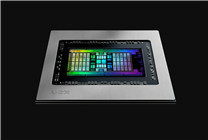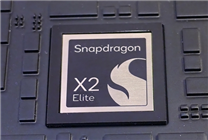The Battle for AI Supremacy: AMD vs. NVIDIA
Summary:
- The competition between AMD’s Instinct MI450 and NVIDIA’s Vera Rubin chips intensifies, with significant advancements in power consumption and bandwidth.
- Both companies are striving to close the technology gap using innovations like HBM4 and TSMC’s N3P process nodes.
- AMD positions the MI450 as a game-changer, aiming for market recognition against NVIDIA’s established dominance.
The dynamic landscape of AI chips is witnessing an unprecedented battle between two tech giants: AMD and NVIDIA. As both companies gear up to launch their next-generation products, the intensifying competition aims not only at performance but also at capturing the high-end AI architecture market.
Recent developments indicate that AMD’s Instinct MI450 series and NVIDIA’s Vera Rubin chips are set to escalate the rivalry even further. The MI450 and Vera Rubin have undergone multiple design iterations, each focused on outperforming the other. Notably, the Total Graphics Power (TGP) consumption of AMD’s MI450 has surged by 200W, while NVIDIA responded with a staggering increase of 500W, bringing the TGP of the Vera Rubin to a monumental 2300W.
In conjunction with these power enhancements, the bandwidth of the Vera Rubin has risen significantly, from 13TB/s per GPU to an impressive 20TB/s. As a result, NVIDIA’s Vera Rubin now leads AMD’s MI450X by 0.4TB/s, a crucial metric in the high-performance computing sector.
Historically, AMD has faced challenges in keeping pace with NVIDIA’s rapid product cycles, leading to a noticeable gap in technology offerings. However, the upcoming MI450 series signifies a potential turning point. Both companies are poised to adopt advanced technologies, including high bandwidth memory (HBM4), TSMC’s state-of-the-art N3P process nodes, and innovative chiplet designs.
AMD’s confidence in the MI450 series is palpable. Prominent figures within the company, such as Executive Vice President Forrest Norrod, have expressed that the MI450 series could represent a transformative moment for AMD, reminiscent of the impact that the EPYC 7003 series server processors had on the market. Norrod asserted that the MI450 would not only rival the Vera Rubin but would provide users with competitive alternatives to NVIDIA’s technology stack.
While the complete specifications for both the MI450 and Vera Rubin have yet to be disclosed, AMD’s leadership is optimistic about the MI450’s capabilities. Early insights suggest that the MI450 will be equipped with advanced hardware designed to achieve strong market recognition.
In summary, the race between AMD and NVIDIA in the AI chip sector is not just about numbers; it’s a strategic play that will influence the future of AI applications across industries. As both companies continue to innovate and optimize their designs, the impending rivalry promises to reshape the landscape of high-performance computing.
In conclusion, the battle of AI chips is heating up as AMD and NVIDIA push the boundaries of technology. With AMD focusing on elevating its competitive edge through the MI450 series, and NVIDIA responding with robust enhancements in the Vera Rubin, the quest for supremacy is more exhilarating than ever. Industry observers eagerly await the unveiling of both products, which are poised to redefine performance standards and reshape market dynamics.










